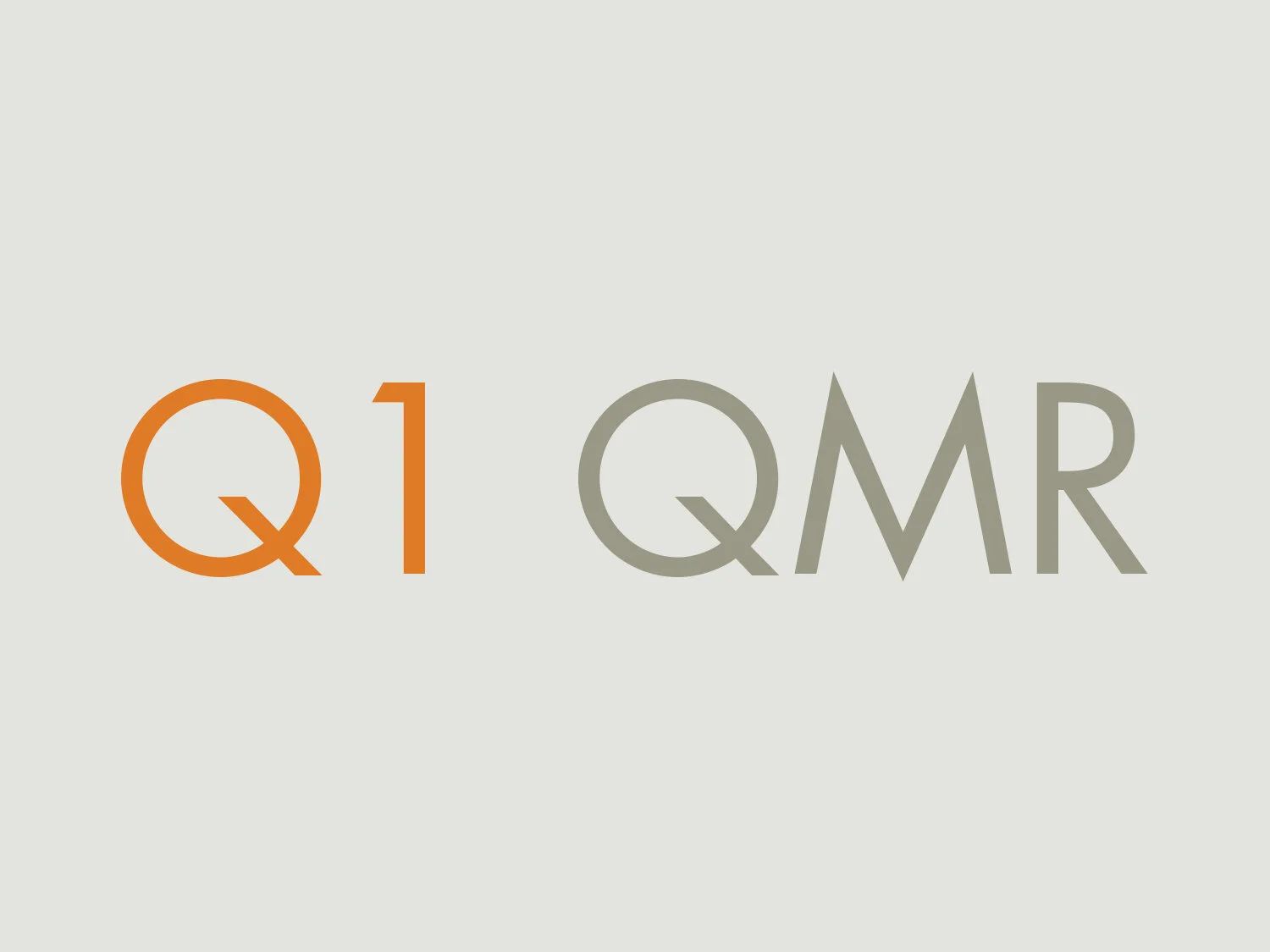Markets Update: A Quarter in Review
What a difference a year makes! While it may seem much longer since we have been under global pandemic-induced “house arrest”, the end of the first quarter of 2020 had us all feeling a bit worse, at least from a capital markets perspective, than the end of the first quarter of 2021. A year ago, we were amid one of the swiftest market declines on record. Today, we sit near all-time highs. While that comes with its own risks, it certainly feels much better.
ECONOMY
The shutdown from the pandemic and how that evolves has caused major uncertainty in the markets and the economy, though it seems like optimism is being priced in now. The pandemic news in the U.S. has been positive over the past few months. Vaccines are effective and the number of people receiving them are increasing. Cases, hospitalizations, and deaths have fallen sharply from their winter peaks. It was also a quarter of firsts: Joe Biden took office for his first term as the 46th President of the United States and the American Rescue Plan was signed into law on March 11th. The yield on 30-year U.S. treasury bond hit 2% for the first time since the pandemic began, closing the quarter at 2.39% as longer-term rates continued their rise. A newly coined “meme” investing trend developed, making major media headlines but having minimal impact on our disciplined, long-term investing process and outlook. Finally, the S&P 500 index closed above 4,000 and the Dow Jones Industrials index closed above 33,000, surpassing their respective levels for the first time, though both indexes officially ended the quarter slightly below those price levels.
Home sales continued to climb, as did prices, and small cap stocks had another very strong quarter. U.S. consumer confidence hit its highest point since the pandemic began. There are feelings of optimism in the markets and economy as people get vaccinated and stay-at-home orders are lifted. The one place this optimism did not help investors was with rising interest rates leading to negative core bond returns for the quarter.
As we look ahead, we expect more muted returns from domestic stocks, higher returns from foreign stocks, and minimal returns, but increasingly important ballast when we need it, from our high-quality bond positions.
STOCKS
Global equities posted solid returns this quarter, led by U.S. stocks with a 6.35% gain (and an impressive 62.53% gain over the past 12 months coming off the pandemic lows). International developed stocks returned 4.04%, while emerging-markets stocks gained 2.29%. The U.S. dollar strengthened against most developed and emerging-markets currencies, a headwind to U.S. investors in foreign stocks. Global real estate also performed well, returning 6.22% for the quarter. Digging a little deeper into the drivers of returns, the U.S. market continued to reward more economically sensitive value stocks as we recover from the shock of the shutdown and recession. Small cap value stocks had an amazing quarter, returning 21.17% (and a whopping 97.1% over the past 12 months!). While one quarter, and even one year, is very short term, it is refreshing to see such a rebound in performance of small and value stocks. The outperformance of these stocks also persisted across global equity markets. Patience and discipline are key characteristics of long-term successful investors. While often rewarded, they are not easy to maintain during long dry spells like what we have lived through recently, where it seems like U.S. large cap growth stocks are the only thing you would want to own in your portfolio.
BONDS
Long-term interest rates rose considerably during the quarter, while short-term rates remained extremely low due to the Federal Reserve’s accommodative monetary policy. Bonds are the core ballast of our portfolio, and as income comes in, it can be reinvested at these higher rates. Our short-term high quality bond positions are less sensitive to rising rates due to their lower duration. Rising bond yields are common during periods of healthy growth and reflation. If growth happens too quickly, and the Fed must raise short-term rates to keep inflation from rising too quickly, that is often the precursor to a recessionary environment. With the data we are seeing today, this feels more like a medium to long-term, rather than a short-term, risk.
PORTFOLIO PERFORMANCE
As we look over performance this quarter, our portfolios outperformed their respective benchmarks. Strong absolute performance in global stock markets and global real estate securities were the main drivers of our portfolios’ positive returns for the quarter. As always, we remind clients to focus on the overall portfolio performance, or the sum of the parts, rather than the individual positions. This advice is especially true on a short-term, quarter-by-quarter basis. Taking a longer term view, our main takeaways are diversification has served us well, and we are achieving the investment returns on par with what we model in our long-term planning work. This gives us a high level of confidence that our clients remain on track to achieve their goals, and perhaps realize some of their aspirations. The global capital markets have provided above average absolute returns over the past five years. We do not know if this supportive environment will continue, but we are confident in our ability to manage through whatever comes next and continue to compound our clients’ wealth.
——
1. New Coronavirus Cases in the United States | By The New York Times
Sources: State and local health agencies
——
Topic of the Quarter: YOLO, Meme, and EMH: What’s Your Investment Style?
You only live once! Social media investors have banded together on unconventional platforms to drive up the prices of a handful of “meme stocks,” seemingly without traditional evaluation of investing risks and rewards. They made headlines with their “short squeeze” of GameStop (GME), and, as they garner media attention, their tactics continue. While it’s not the intended victim of the YOLO traders, will the efficient market hypothesis be a casualty of these events? The answer depends a lot on your definition of efficient markets. Perhaps long-term investors would be better served questioning the potential impact on their investment philosophy.
Fama (1970) defines the efficient market hypothesis (EMH) to be the simple statement that prices reflect all available information. The rub is that it doesn’t say how investors should use this information. EMH is silent on the “correct” ways investors should use information and prices should be set. To be testable, EMH needs a companion model: a hypothesis for how markets and investors should behave. This leaves a lot of room for interpretation. Should asset prices be set by rational investors whose only concerns are systematic risk1 and expected returns? It seems implausible to link recent meme-stock price movements to economic risks. Rather, they seem fueled by investor demand to be part of a social movement, hopes to strike it rich with a lucky stock pick, or plain old schadenfreude.
There is a vast ecosystem of investors, from individuals investing in their own accounts to governments and corporations who invest on behalf of thousands. Ask investors why they invest the way they do, and you’ll likely get a range of goals and approaches just as diverse. It’s this complex system that generates the demand for stocks. Another complex system fuels the supply of stocks. Supply and demand meet at the market price. People may contend that the market is not always efficient, or rational, but the stock market is always in equilibrium. Every trade has two sides, with a seller for every buyer and a profit for every loss.
There are plenty of well-studied examples that show supply and demand at work. The huge increase in demand for stocks added to a well-tracked index often creates a run-up in the stock price. Some of this price increase can be temporary and reversed once the tremendous liquidity demands at index reconstitution2 are met. Index reconstitution is just one example; instances of liquidity-driven price movements happen all the time. It is well documented that liquidity demands can produce temporary price movements.3 Investors may wonder if temporary price dislocations motivated by users of r/WallStreetBets differ from those caused by changes to an index. Lots of buying puts temporary upward pressure on prices, which later fall back to “fundamental value”–it sounds familiar. The more relevant observation may be that markets are complex systems well adapted to facilitate the supply and demand of numerous market participants.
There are numerous reasons people may be willing to hold different stocks at different expected returns. Can all those differences be explained by risks? Doubtful. To quote Professor Fama, “The point is not that markets are efficient. They’re not. It’s just a model.”4 EMH can be a very useful model to inform how investors should behave. We believe investing as if markets are efficient is a good philosophy for building long-term wealth. Trying to outguess markets might be a quick way to destroy wealth.
It’s true, you only live once. The good news is that investors can look to market prices, not internet fads, to pursue higher expected returns. Theoretical and empirical research indicate higher expected returns come from lower relative prices and higher future cash flows to investors. Long-run investors can be
better served by using markets, rather than chatrooms, for information on expected returns.
—
1. Systematic risk is the possibility of an investor experiencing losses due to factors that affect the overall performance of the financial markets in which he or she is involved.
2. Reconstitution involves the re-evaluation of a market index. The process involves sorting, adding, and removing stocks to ensure that the index reflects up-to-date market capitalization and style.
3. For example, see “Tesla’s Charge Reveals Weak Points of Indexing” (Dimensional, 2021)
4. “Are markets efficient?” – Interview between Eugene Fama and Richard Thaler (June 30, 2016)
The information in this document is provided in good faith without any warranty and is intended for the recipient’s background information only. It does not constitute investment advice, recommendation, or an offer of any services or products for sale and is not intended to provide a sufficient basis on which to make an investment decision. It is the responsibility of any persons wishing to make a purchase to inform themselves of and observe all applicable laws and regulations. Unauthorized copying, reproducing, duplicating, or transmitting of this document are strictly prohibited.
—





